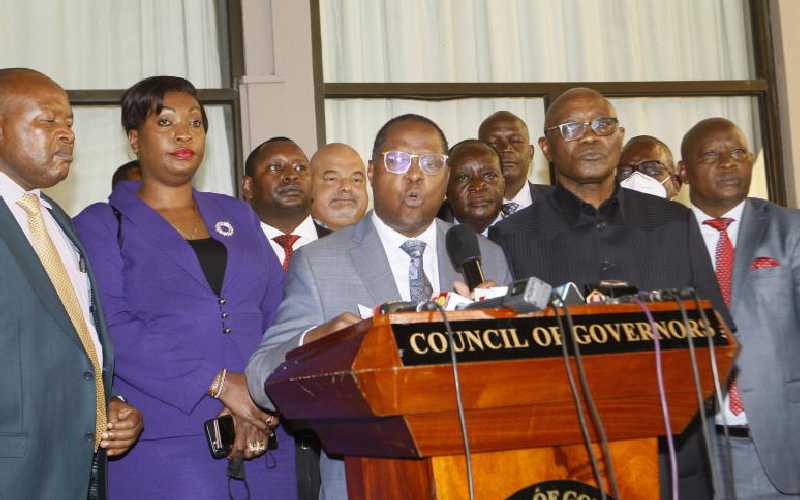×
The Standard e-Paper
Stay Informed, Even Offline

Council of Governors re-elected Chairman Martin Wambora and his deputy James Ongwae addressing the media as they unveiled the new office. [ Jenipher Wachie, Standard]
The Council of Governors (CoG) was in the news this week, first with a section of the print media predicting tough contests during the elections of the chairman and committee leadership.